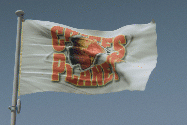|
Slinky
In 1943, naval engineer Richard James was trying to develop a spring that would support and stabilize sensitive equipment on ships. When one of the springs accidentally fell off a shelf, it continued moving, and James got the idea for a toy. His wife Betty came up with the name, and when the Slinky made its debut in late 1945, James sold 400 of the bouncy toys in 90 minutes. Today, more than 250 million Slinkys have been sold worldwide.
Potato Chips
If you can't eat just one potato chip, blame it on chef George Crum. He reportedly created the salty snack in 1853 at Moon's Lake House near Saratoga Springs, New York. Fed up with a customer who continuously sent his fried potatoes back, complaining that they were soggy and not crunchy enough, Crum sliced the potatoes as thin as possible, fried them in hot grease, then doused them with salt. The customer loved them and "Saratoga Chips" quickly became a popular item at the lodge and throughout New England.
Eventually, the chips were mass-produced for home consumption, but since they were stored in barrels or tins, they quickly went stale. Then, in the 1920s, Laura Scudder invented the airtight bag by ironing together two pieces of waxed paper, thus keeping the chips fresh longer. Today, chips are packaged in plastic or foil bags or cardboard containers and come in a variety of flavors, including sour cream and onion, barbecue, and salt and vinegar.
Fireworks
Fireworks originated in China some 2,000 years ago, and legend has it that they were accidentally invented by a cook who mixed together charcoal, sulfur, and saltpeter -- all items commonly found in kitchens in those days. The mixture burned and when compressed in a bamboo tube, it exploded. There's no record of whether it was the cook's last day on the job.
Post-it Notes
A Post-it note is a small piece of paper with a strip of low-tack adhesive on the back that allows it to be temporarily attached to documents, walls, computer monitors, and just about anything else. The idea for the Post-it note was conceived in 1974 by Arthur Fry as a way of holding bookmarks in his hymnal while singing in the church choir. He was aware of an adhesive accidentally developed in 1968 by fellow 3M employee Spencer Silver. No application for the lightly sticky stuff was apparent until Fry's idea. The 3M company was initially skeptical about the product's profitability, but in 1980, the product was introduced around the world. Today, Post-it notes are sold in more than 100 countries.
__________________
 
|